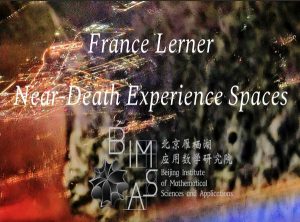Near-Death Experiences (NDEs) are frequently described as ineffable, making them difficult to study through language-based research alone. This event presents an innovative multimodal methodology that goes beyond narrative testimonies by integrating chronological experience segmentation and participant-generated graphic reconstructions. These visual representations allow for the documentation of perceived spatial structures, embodied viewpoints, and motion trajectories that are not accessible through verbal accounts.
By examining how Out-of-Body Experiences (OBEs) and NDEs unfold over time, the study isolates the NDE core and clarifies its relationship to OBE phases whether distinct, overlapping, or sequentially dependent. The resulting visual data reveal consistent spatial invariants across participants, suggesting that NDE spaces may follow recognizable perceptual or cognitive organizing principles. Attendees will gain insight into an emerging research paradigm that expands the empirical accessibility of extraordinary experiences through structured visual and spatial documentation.
• NDEs are difficult to fully express through words alone, which creates limitations for research that relies only on narrative interview data.
• This talk introduces an alternative, hybrid method that combines chronological segmentation of the experience with participant-generated graphic reconstructions.
• The approach is designed to capture spatial, perceptual, and embodied aspects of NDEs and OBEs that may not emerge through verbal reports, offering researchers a complementary tool for future studies.
France Lerner, Ph.D., is an interdisciplinary artist-researcher and educator working at the intersection of visual art, altered-states research, and immersive technologies. She is currently an Assistant Professor at the Beijing Institute of Mathematical Sciences and Applications (BIMSA), where she teaches courses in neuroaesthetics, embodiment, and generative/extended reality methodologies. Dr. Lerner holds a Ph.D. in Art and Science (summa cum laude) from the Royal Academy of Arts in Brussels in collaboration with the Coma Science Group in Liège, focusing on visual and spatial representations of Near-Death Experiences.
Her academic trajectory includes a multi-year postdoctoral fellowship at the Weizmann Institute of Science, where she conducted research in virtual reality and motor control within the Laboratory for Robotics and Virtual Reality.
She is a research affiliate of the ALIUS Network for the study of consciousness and non-ordinary experiences and has developed several pioneering research-creation methodologies combining experiential sequencing, participant-generated spatial reconstructions, and immersive visualization tools.
Dr. Lerner has presented her work internationally across art, neuroscience, and consciousness-studies contexts and is the author of multiple peer-reviewed publications and research-based exhibitions addressing visual field structure, embodiment, and spatial organization in NDEs and OBEs. Her current work explores hybrid scientific-artistic protocols that integrate VR-based visualization with graphic reconstruction methods to expand empirical access to non-ordinary human experience.







